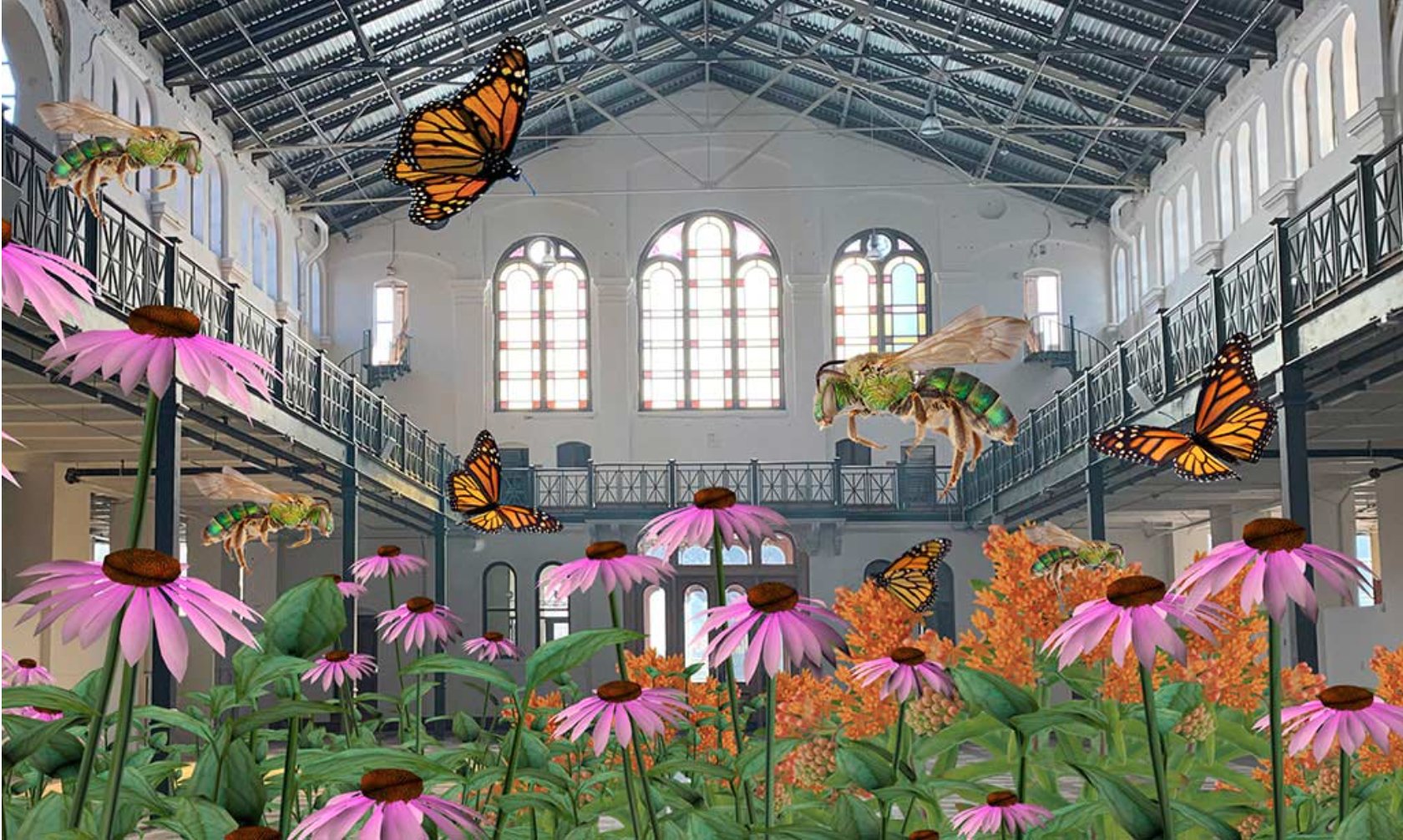- Play video
ReWildAR, 2021
ReWildAR Visualization in AIB
Courtesy of Gazelli Art House Ltd.
Copyright The Artist
About The Artwork
ReWildAR is a 360° augmented reality installation, visible on site in the Smithsonian AIB on iOS or Android mobile devices. ReWildAR offers a vision of how Washington D.C. can be rewilded to create a thriving, sustainable environment for nature in the city, focusing on the symbiotic relationships between native flowers and insects that are necessary for a diverse and healthy ecosystem. This includes not just insects we love, like the Monarch butterfly, but insects that we might see as nuisances, such as huge moths, and bees that (unlike the honey bee) produce no commercial benefit for us. For details on which plants and insects are depicted in ReWildAR please see “Background Research” on our ReWildAR website.
Conveying a wilder nature with “fuzzy” algorithms and random processes:
Humans, in their attempts to bring Nature under their control and turn wilderness areas into "productive" lands, are eliminating the biodiversity that keeps the Earth's ecosystems healthy. ReWildAR is a plea to learn to let go of control, to let Nature be messy and "uncomfortable" so a diversity of species can thrive. To convey the sense of Nature released from the confines of human control, we made extensive use of random systems in the artwork.
To depict flying swarms of bees and butterflies we use particle systems, computer graphic algorithmic systems that animate a “cloud” of small images or 3D models, usually to depict natural phenomena such as fire, clouds, water - or swarms of creatures. We define basic properties such as how many particles should be created per unit time, and what physical forces should act upon them. Once set in motion, however, we cannot direct the movement of any individual virtual insect - they buzz and flutter around, outside of our control.
Also, although we could force the virtual plants to always be at fixed positions, in ReWildAR we chose to use geolocative augmented reality with absolute GPS positions, a form of AR that is impossible to control exactly. We specify the GPS coordinates of each virtual plant, but in order to calculate its proper size and orientation with respect to your viewpoint, your smartphone has to process simultaneous readings from 4 GPS satellites. Since the satellites are constantly moving, your smartphone has to constantly recalculate these values - so the plants seem to be constantly moving around you.
Thus the plants and insects escape our direct control as artists and your control as viewer - evocative of how we need to give up the desire for control of vast areas of the nature that surrounds us. ReWildAR is messy, it can be very “in your face” when an insect or plant comes to near, or when you try to approach it, it might jump away from you. You as viewer have to approach the AR artwork on its own terms, using your smartphone as a window into a parallel, invisible world that surrounds us on all sides and that exists on its own terms. ReWildAR depicts Nature as wild and erratic, not planted in neat rows, bereft of insects whether helpful or harmful, pinned or stuffed in an immobile display, or served up on a platter to be carefully examined at our leisure.
About Tamiko Thiel
Tamiko Thiel is an American artist, known for her digital art. Her work often explores "the interplay of place, space, the body and cultural identity," and uses augmented reality (AR) as her platform.
Thiel is based in Munich, Germany.





